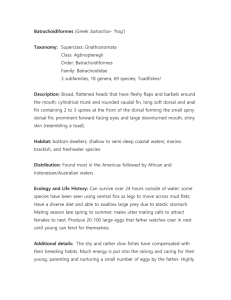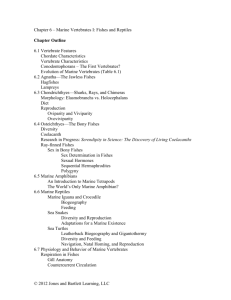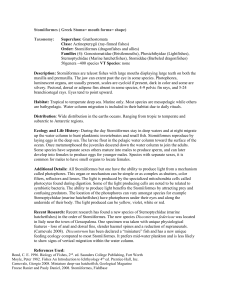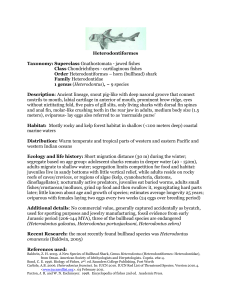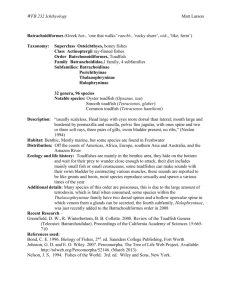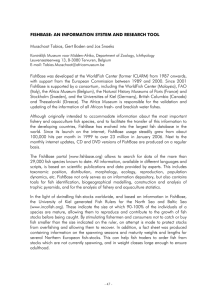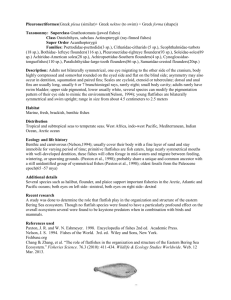Rachael DeWitt Name: Gobiidae (Latin, gobius=gudgeon
advertisement
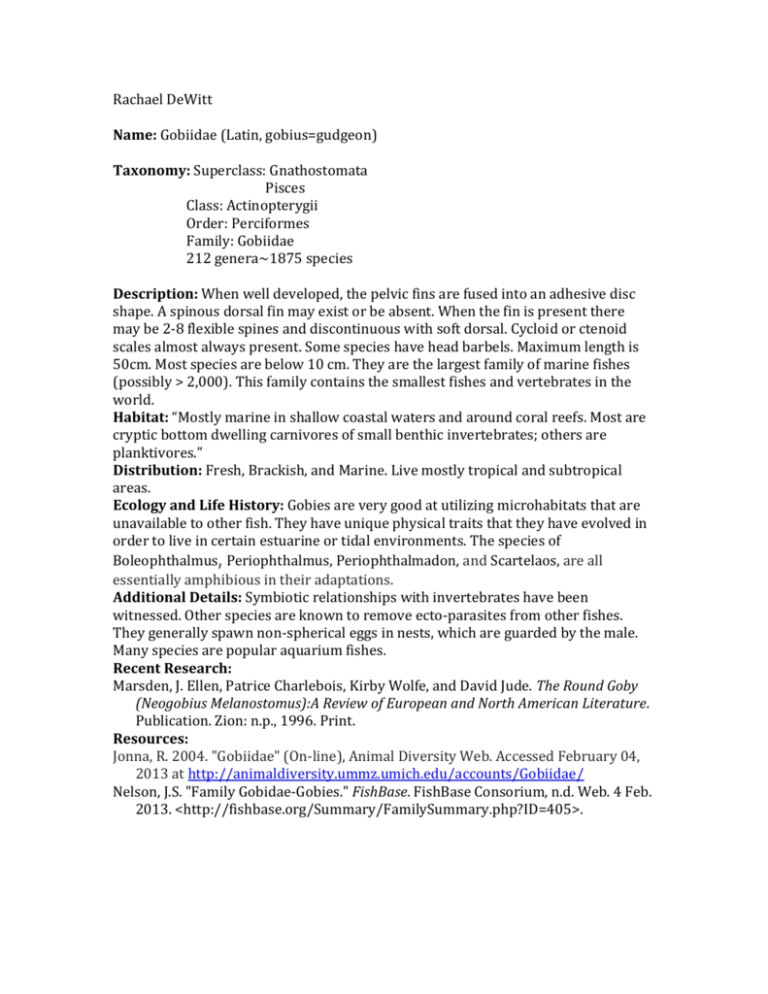
Rachael DeWitt Name: Gobiidae (Latin, gobius=gudgeon) Taxonomy: Superclass: Gnathostomata Pisces Class: Actinopterygii Order: Perciformes Family: Gobiidae 212 genera~1875 species Description: When well developed, the pelvic fins are fused into an adhesive disc shape. A spinous dorsal fin may exist or be absent. When the fin is present there may be 2-8 flexible spines and discontinuous with soft dorsal. Cycloid or ctenoid scales almost always present. Some species have head barbels. Maximum length is 50cm. Most species are below 10 cm. They are the largest family of marine fishes (possibly > 2,000). This family contains the smallest fishes and vertebrates in the world. Habitat: “Mostly marine in shallow coastal waters and around coral reefs. Most are cryptic bottom dwelling carnivores of small benthic invertebrates; others are planktivores.” Distribution: Fresh, Brackish, and Marine. Live mostly tropical and subtropical areas. Ecology and Life History: Gobies are very good at utilizing microhabitats that are unavailable to other fish. They have unique physical traits that they have evolved in order to live in certain estuarine or tidal environments. The species of Boleophthalmus, Periophthalmus, Periophthalmadon, and Scartelaos, are all essentially amphibious in their adaptations. Additional Details: Symbiotic relationships with invertebrates have been witnessed. Other species are known to remove ecto-parasites from other fishes. They generally spawn non-spherical eggs in nests, which are guarded by the male. Many species are popular aquarium fishes. Recent Research: Marsden, J. Ellen, Patrice Charlebois, Kirby Wolfe, and David Jude. The Round Goby (Neogobius Melanostomus):A Review of European and North American Literature. Publication. Zion: n.p., 1996. Print. Resources: Jonna, R. 2004. "Gobiidae" (On-line), Animal Diversity Web. Accessed February 04, 2013 at http://animaldiversity.ummz.umich.edu/accounts/Gobiidae/ Nelson, J.S. "Family Gobidae-Gobies." FishBase. FishBase Consorium, n.d. Web. 4 Feb. 2013. <http://fishbase.org/Summary/FamilySummary.php?ID=405>.

